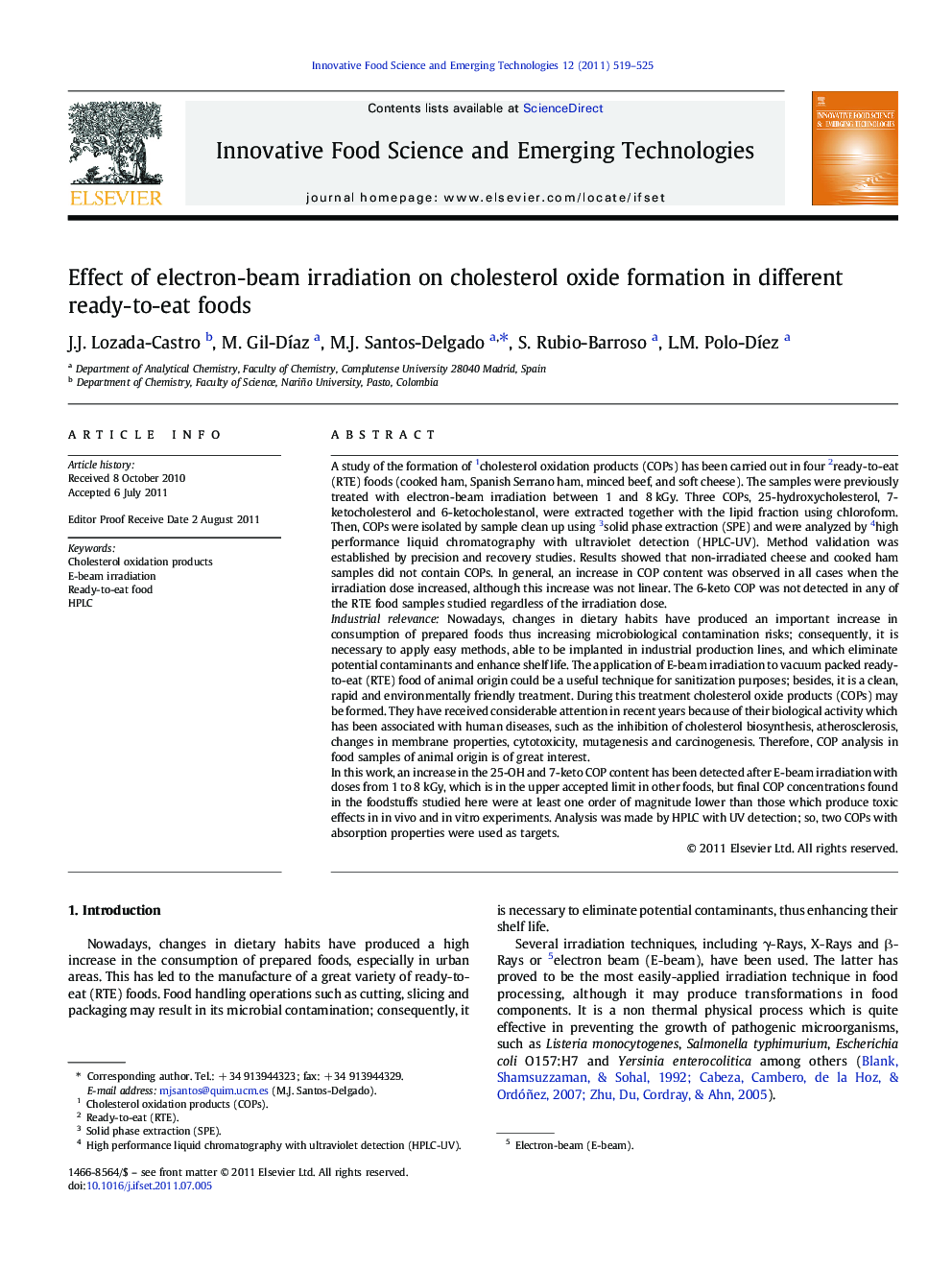| کد مقاله | کد نشریه | سال انتشار | مقاله انگلیسی | نسخه تمام متن |
|---|---|---|---|---|
| 2087027 | 1080626 | 2011 | 7 صفحه PDF | دانلود رایگان |

A study of the formation of 1cholesterol oxidation products (COPs) has been carried out in four 2ready-to-eat (RTE) foods (cooked ham, Spanish Serrano ham, minced beef, and soft cheese). The samples were previously treated with electron-beam irradiation between 1 and 8 kGy. Three COPs, 25-hydroxycholesterol, 7-ketocholesterol and 6-ketocholestanol, were extracted together with the lipid fraction using chloroform. Then, COPs were isolated by sample clean up using 3solid phase extraction (SPE) and were analyzed by 4high performance liquid chromatography with ultraviolet detection (HPLC-UV). Method validation was established by precision and recovery studies. Results showed that non-irradiated cheese and cooked ham samples did not contain COPs. In general, an increase in COP content was observed in all cases when the irradiation dose increased, although this increase was not linear. The 6-keto COP was not detected in any of the RTE food samples studied regardless of the irradiation dose.Industrial relevanceNowadays, changes in dietary habits have produced an important increase in consumption of prepared foods thus increasing microbiological contamination risks; consequently, it is necessary to apply easy methods, able to be implanted in industrial production lines, and which eliminate potential contaminants and enhance shelf life. The application of E-beam irradiation to vacuum packed ready-to-eat (RTE) food of animal origin could be a useful technique for sanitization purposes; besides, it is a clean, rapid and environmentally friendly treatment. During this treatment cholesterol oxide products (COPs) may be formed. They have received considerable attention in recent years because of their biological activity which has been associated with human diseases, such as the inhibition of cholesterol biosynthesis, atherosclerosis, changes in membrane properties, cytotoxicity, mutagenesis and carcinogenesis. Therefore, COP analysis in food samples of animal origin is of great interest.In this work, an increase in the 25-OH and 7-keto COP content has been detected after E-beam irradiation with doses from 1 to 8 kGy, which is in the upper accepted limit in other foods, but final COP concentrations found in the foodstuffs studied here were at least one order of magnitude lower than those which produce toxic effects in in vivo and in vitro experiments. Analysis was made by HPLC with UV detection; so, two COPs with absorption properties were used as targets.
► Formation of cholesterol oxides (COPs) was studied in ready-to-eat foods after E-beam irradiation.
► A COP sample was prepared by lixiviation and SPE before HPLC-UV analysis.
► 25-OH and 7-keto COP content increases with the irradiation doses.
► COP content was lower than the toxic level for in vitro and in vivo experiments.
Journal: Innovative Food Science & Emerging Technologies - Volume 12, Issue 4, October 2011, Pages 519–525